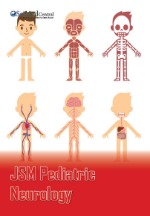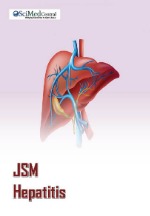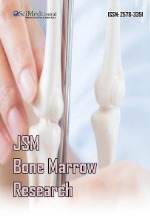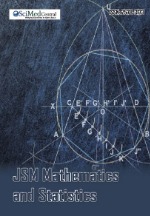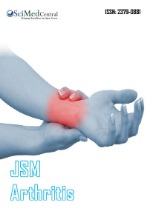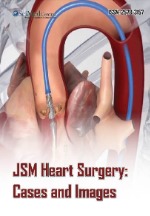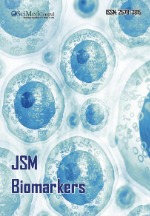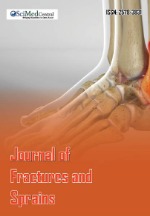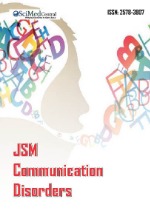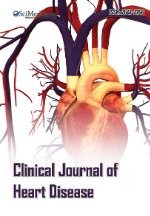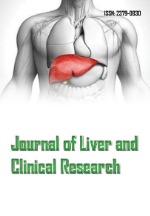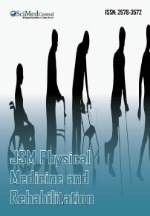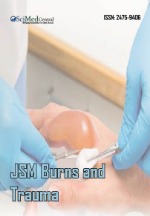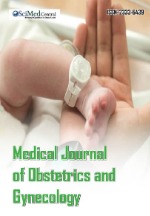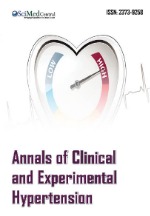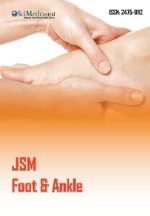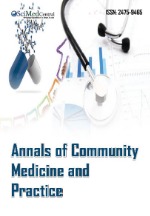Are the Rates of Adolescent Obesity Related to Geographical Region? Results from NHIS 2008-2014
- 1. Department of Mathematics, Duquesne University, USA
Abstract
Background: In 2010, Michelle Obama launched the ‘Let’s Move’ campaign aimed at eliminating childhood obesity. In 2015, as part of the fifth anniversary of Let’s Move, the First Lady is now challenging Americans to “Gimme Five” things they are doing to lead healthier life.
Objective: This study was undertaken to determine how widespread the problem of overweight and obesity in adolescents is and if the rates vary by region and gender.
Methods: To answer this question we used data collected from the National Health Interview Survey (NHIS 2008, 2011, & 2014) sample child core segment, ages 12 -17 years. Sample sizes used in the analysis were 8,815 (2008), 12,850 (2011) and 13,380 (2014). Definitions for normal, overweight and obese were defined using CDC growth charts for sex-age BMI distributions. Four regions of the US were already defined within the NHIS. STATA v14.1 software, which takes into account the complex survey design, was used for analysis.
Results: Overall, 33.3% of male adolescents were either overweight or obese in 2008, 32.3% in 2011 and 31.6% in 2014. Likewise, female adolescents were slightly less than males with 29.0% being either overweight or obese in 2008, 27.5% in 2011 and 28.7 % in 2014. Within any given year, there were large variations in the prevalence’s by region. The highest spread in the prevalence’s between the regions occurred in 2008; for males overweight the prevalence was 20.7% (North East) vs. 14.7% overweight (West). The ranges were similar for both males and females in each year, with the lowest spread occurring in 2014, females overweight 17.4% (Midwest) vs. 15.8% (West).
Conclusion: The results show similar estimates across years for the overall prevalence rates for overweight or obesity among boys and girls age 12-17. However, there is huge variation in in the prevalence rates for either overweight or obese adolescents when examine by region within each year
Keywords
- Overweight
- Obese
- Adolescent obesity
Citation
D’Amico F (2016) Are the Rates of Adolescent Obesity Related to Geographical Region? Results from NHIS 2008-2014. J Family Med Community Health 3(1): 1072.
ABBREVIATIONS
NHIS: National Health Interview Survey
INTRODUCTION
Are our children getting bigger? Pediatric obesity in America seems to be on the rise. From 1999-2000 through 2013- 2014, a significant increase in overall obesity was observed in both adults (age >20 years) and youth (ages 2 -19). However between 2003-2004 and 2013-2014, there was no change in the prevalence of obesity among the youth [1]. On February 9th, 2010 First Lady and self-described “mom-in-chief,” Michelle Obama, launched the ‘Let’s Move’ campaign (www.letsmove.gov), aimed at eliminating childhood obesity in a generation. According to Mrs. Obama and the Centers for Disease Control and Prevention, about 32% of children and adolescents, approximately 25 million kids, are obese or overweight [2]. Childhood obesity is related to a host of co-morbid conditions, including Diabetes Mellitus, Hypertension, Depression and a shortened life expectancy [3]. Just how widespread is this problem and does the prevalence in America varies by region? This study was undertaken to examine this question in adolescents (ages 12-17) and explore the obesity and overweight rates by gender within each region.
METHODS
To answer the proposed question we chose to use data collected from the National Health Interview Surveys (NHIS 2008, NHIS 2011, & NHIS 2014) sample child core segment. Originally our study group questioned whether there were “pockets” or “clusters” within the U.S where either the overweight or obese rates were very high or low. However, the only available public use population data was obtained from CDC’s NHIS.
The National Health Interview Survey (NHIS) is a multi-purpose health survey conducted by the National Center for Health Statistics (NCHS), Centers for Disease Control and Prevention (CDC) and is the principal source of information on the health of the civilian, non-institutionalized, household population of the United States. Additionally, this survey releases information on adolescents (age 12-17) that allows calculation of their BMI and subsequently determination of their obesity status.
The interviewed sample for 2008 consisted of 28,790 households, which yielded 74,236 persons in 29,421 families. The actual number interviewed for the Sample Child component (done by proxy response from a knowledgeable adult in the family), was 8,815 children under 18 years of age. Similar numbers of households yielded 12,850 adolescents for year 2011 and 13,380 adolescents for year 2014. However, not all children had information on both height and weight. Thus, the actual sample sizes used in the statistical estimates for each year are smaller than those cited.
In all NHIS years, questions about children’s current height and weight were limited to children aged 12-17 years. This limitation was introduced because of serious concerns about the reporting accuracy of height and weight information for younger children due to the rapid growth of children at younger ages. At the same time, an internal consistency check for the height and weight variables was added to the survey instrument to improve data quality. Extreme values for these height and weight triggered a request for interviewer verification of data entry and re-asking height and weight questions, if appropriate. Sample children do not self-report; instead a knowledgeable adult (typically a parent or guardian) answers questions on the sample child’s behalf.
Using height and weight information, a weight-status variable defined aseither “overweight” (BMI at or above the sex- and age-specific 85th percentile but less than the 95th percentile), “obese” (BMI at or above the 95th percentile) and “normal weight” (BMI below the 85th percentile) was created; all based on the CDC Growth Charts. Region was taken directly from the NHIS variables, where Northeast consisted of States (ME, MA, RI, VT, NH, CT, NY, NJ & PA), Midwest (OH, IN, MI, IL, WI, MO, KS, NE, SD, ND, MN & IA),South (WV, VA, DE, MD, DC, NC, SC, GA, FL, KY, TN, MS, AL, OK, TX, AR & LA) and West (WA, OR, CA, MT, ID, WY, NV, UT, CO, AZ, NM, AK & HI).
The data collected in the NHIS’ are obtained through a complex sample design involving stratification, clustering, and multistage probability sampling of the US population. Because of the complex design, adjusted sampling weights are required to be used in the analysis. STATA software V14.1, which calculates appropriate, adjusted standard errors and population parameter estimates was used for all statistical analyses.
RESULTS
Results from the NHIS years 2008, 2011 and 2014 yielded overweight rates for boys as 0.18, 0.195 and 0.173, while their obesity rates were 0.158, 0.128 and 0.143 respectively. The overweight and obesity rates for girls were slightly lower than boys with their overweight rates being 0.169, 0.152 and 0.166 and obesity rates of 0.121, 0.123 and 0.121 respectively for years 2008, 2011 and 2014 (Figure1). These obesity and overweight estimates from the NHIS are similar to those estimates obtained from the National Health and Nutritional Exam Survey.
Table 1 further breaks down the prevalence’s from
Table 1: Obesity and Overweight Prevalence’s by Gender, Year and Region.
| Gender | Weight Status | Year | Region | |||||
| NE | Midwest | South | West | Inter-Regional Spread | Overall Prevalence | |||
| Male | Obese | 2008 | 20.7 % | 18.4 % | 18.5 % | 14.7 % | 6.0% | 18.0 % |
| 2011 | 19.8 % | 18.7 % | 19.7 % | 19.6 % | 1.1% | 19.5 % | ||
| 2014 | 15.2 % | 17.9% | 16.9 % | 18.9 % | 3.7% | 17.3 % | ||
| Obese | 2008 | 15.4 % | 17.4 % | 16.5 % | 13.2 % | 4.2% | 15.8 | |
| 2011 | 11.7 % | 11.7 % | 14.9 % | 11.5 % | 3.4% | 12.8 % | ||
| 2014 | 13.3 % | 14.4 % | 15.5% | 13.0 % | 2.5% | 14.3 % | ||
| Female | Overweight | 2008 | 15.2 % | 14.8 % | 17.2 % | 20.3 % | 5.5% | 16.9 % |
| 2011 | 15.3 % | 13.6 % | 16.3 % | 14.9 % | 2.8% | 15.2 % | ||
| 2014 | 17.0 % | 17.4 % | 16.3 % | 15.8 % | 1.6% | 16.6 % | ||
| Obese | 2008 | 9.8 % | 14.7 % | 12.3 % | 11.2 % | 4.9% | 12.1 % | |
| 2011 | 10.9 % | 13.8 % | 13.0 % | 10.3 % | 3.5% | 12.3 % | ||
| 2014 | 10.8 % | 13.1 % | 11.9 % | 12.3 % | 2.3% | 12.1 % | ||
Figure 1 by the four regions of the country (see Methods for specific state).

Figure 1 Prevalence of Overweight and Obesity among Adolescence Aged 12-17, by Sex and Year.
Figure 1 values are shown in the “Overall Prevalence” column. However, a noticeable observation in this table is thewide variability in the prevalences for the regions within each year.This is demonstrated in the “Inter-Regional Spread” column; which represents the difference between the region with highest prevalence minus the prevalence for the region with the lowest. For example, in year 2008, the prevalence for adolescent overweight males varies from a high of 20.7% (NE) to a low of 14.7% (West). This is a within year spread of approximately 6%. Similarly, the range for overweight males in 2011 was 1.1% (19.8%, NE minus 18.7%, Midwest); while in 2014 the spread was 3.7% (18.9%, West minus 15.2%, NE).Likewise, the male obesity rates varied within year from 4.2% (2008) to 3.4% (2011) to 2.5% (2014). For adolescent women, the within year prevalence’s varied across the regions similar to the males. Female adolescent overweight prevalence rates varied from 5.5% (2008) to 2.7% (2011) to 1.6% (2014); while the female prevalence’s of obesity varied from4.9% to 3.5% to 2.3%, respectively for years 2008, 2011 and 2014. No significance tests comparing either within year or between year rates were performed because these prevalence’s are population based, samples sizes are very large, standard errors are very small and virtually any difference of 1% or more would be significant. The graphs in Figures 2A,B further illustrate visually the variability in the prevalences by region.

Figure 2 Prevalence of Overweight and Obese Adolescents by Gender, Region and Year.
DISCUSSION
This is a unique study in that both overweight and obese adolescents were examined by gender within the geographical regions of the U.S. Obesity rates in America have not changed drastically since 2002 [4]. Our study supported the relatively constant obesity rates in adolescents among males and females across the years. The number of male overweight adolescents, however, in the Northeast decreased by roughly 5% between 2008 and 2014. The overweight prevalence in the West increased among adolescent males. Interestingly, for the female population, there was a slight increase in overweight prevalence in the Northeast and Midwest while there was a decrease in overweight prevalence in the West. In general, the prevalence of both obese and overweight adolescent males and females converge between the years of 2008 and 2014.
Granted that these are specific comparisons but what do we do with this information? The “obesity” crisis in America has stabilized or, in some instances, decreased from 2008 to 2014. It is important to consider overweight males and females since they are at risk for becoming obese [5,6]. Identifying those at risk can help to focus early interventions for weight loss and overall health goals. Nationally, Michelle Obama’s “Let’s Move” campaign kicked off in 2010, may contribute to some of the downwardtrends across years now seen in the overweight population [7].
Targeting overweight adolescents can lead to early intervention and obesity prevention. Considering the geographical differences, outdoor activities may differ. It is already known that adolescents in more urban areas have lower obesity prevalence than those in rural areas [8]. Although, this study does not examine urban vs rural populations, it is important to note that adolescents in the South and some parts of the West are able to be active in outdoor activities year-round while those in the Midwest and Northeast are limited by climate. The amount of adolescent physical activity is inversely associated with overweight and obesity prevalence [9]. Limitations of this study are the NHIS represents a cross-sectional sample of the population and even though the NHIS is a highly complex designed probability sample of the U.S., one can still wonder how representative are the adolescents from which we generated our estimates. Additionally, individual BMI data for children under the age of 12 is confidential and not provided in public use downloadable files. Therefore we could only study adolescents who were between the ages of 12 and 17. Strengths supporting our results include the fact that our calculated estimates agree with those that are obtained from the annual NHANES adolescent estimates and the NHANES is the major survey that is actually quoted whenever childhood obesity rates are publicized. Further, both the NHIS and the NHANES are designed so that estimates obtained can be extrapolated to the U.S. population.
We’ve noted that our overall prevalence findings using the NHIS are consistent with those extrapolated from the NHANES. Examining the overweight and obese prevalence’s doesn’t show any substantial change between years. But hidden inside each year is the huge variability in the prevalence’s when broken down by region, and this is true whether it’s males or females, overweight or obese. If all we were to look at were the overall prevalence’s, it would be easy to say that since the Let’s Move campaign was initiated in 2010 there has been no change from 2008 to 2011 to 2014. In conclusion, this paper presents data that shows within the years there is considerable variability in the regions and the variability is getting smaller with the smallest being in the most recent year (2014).







